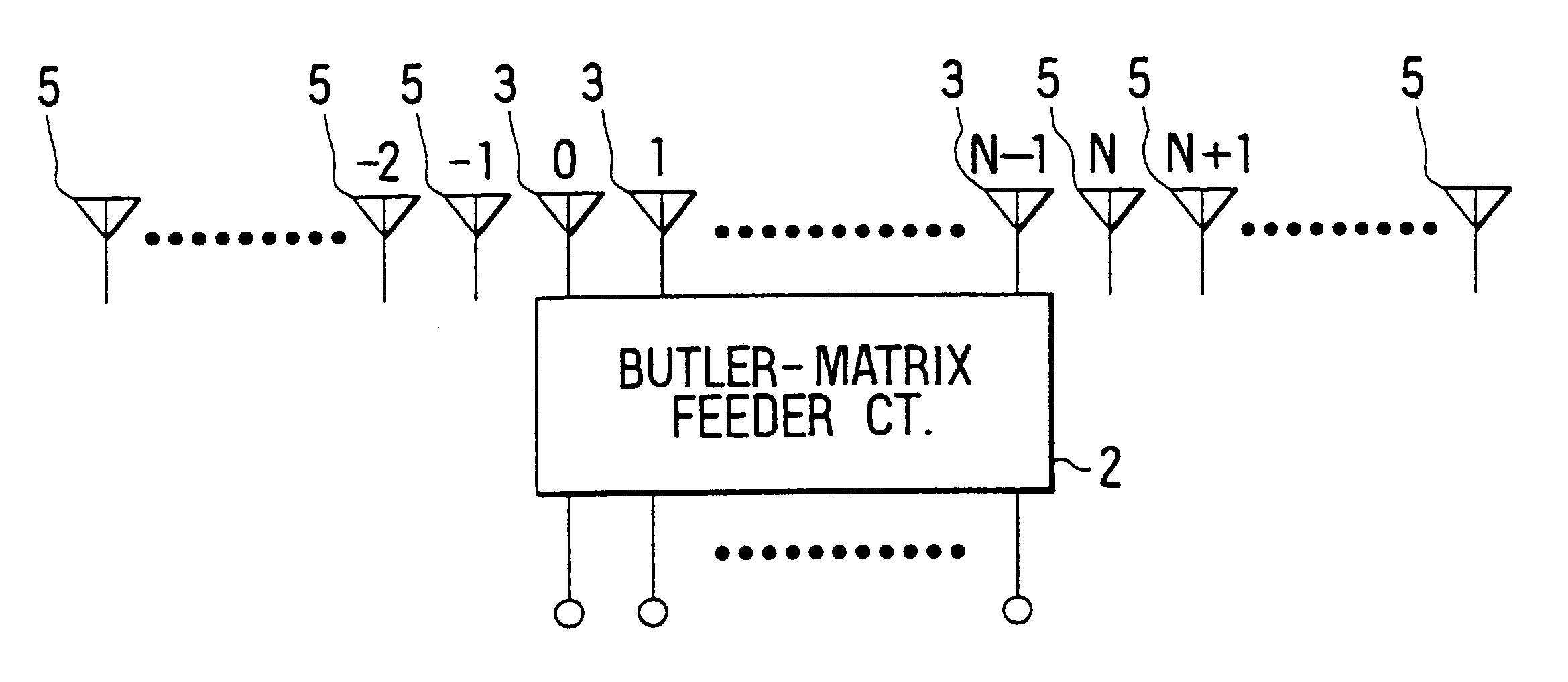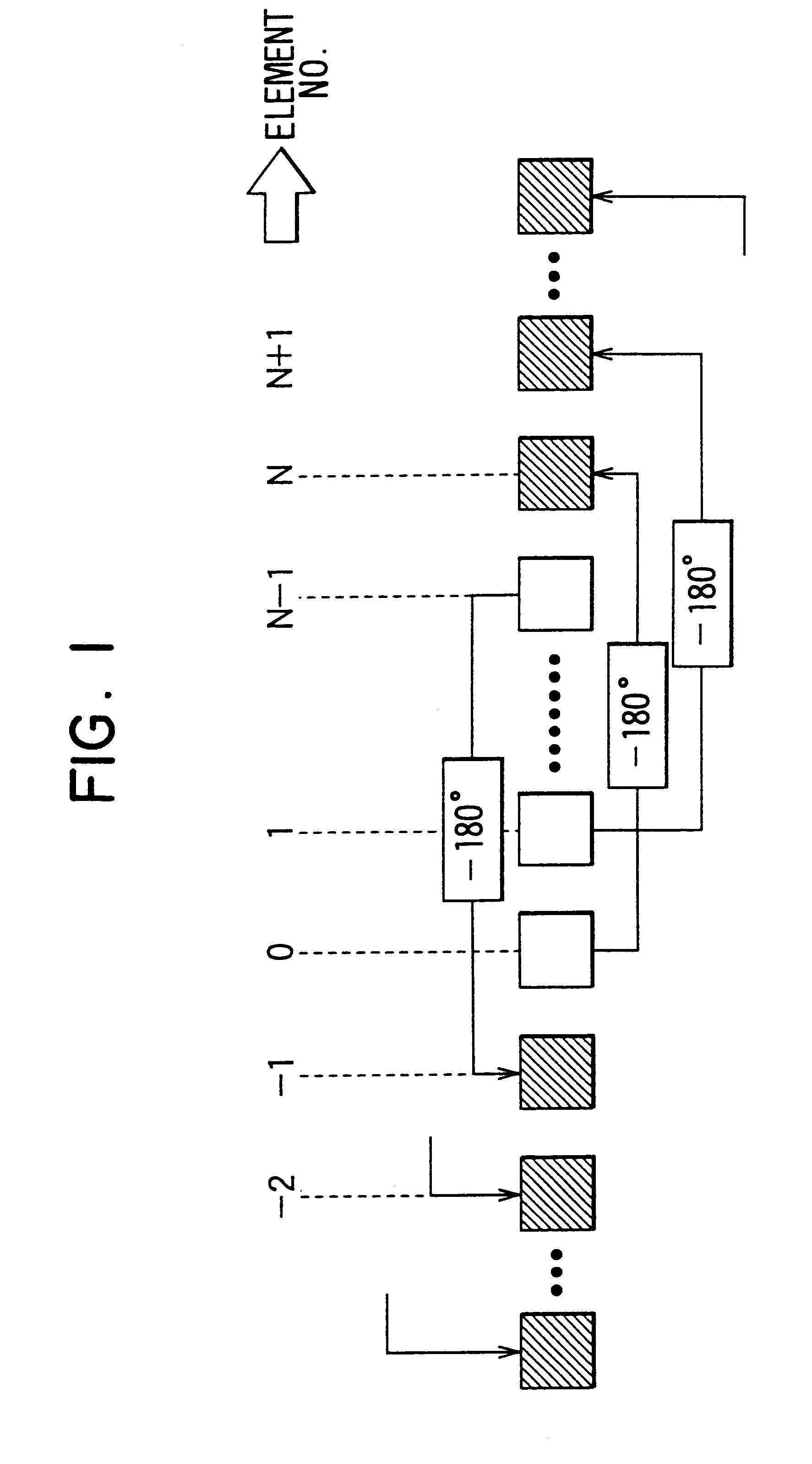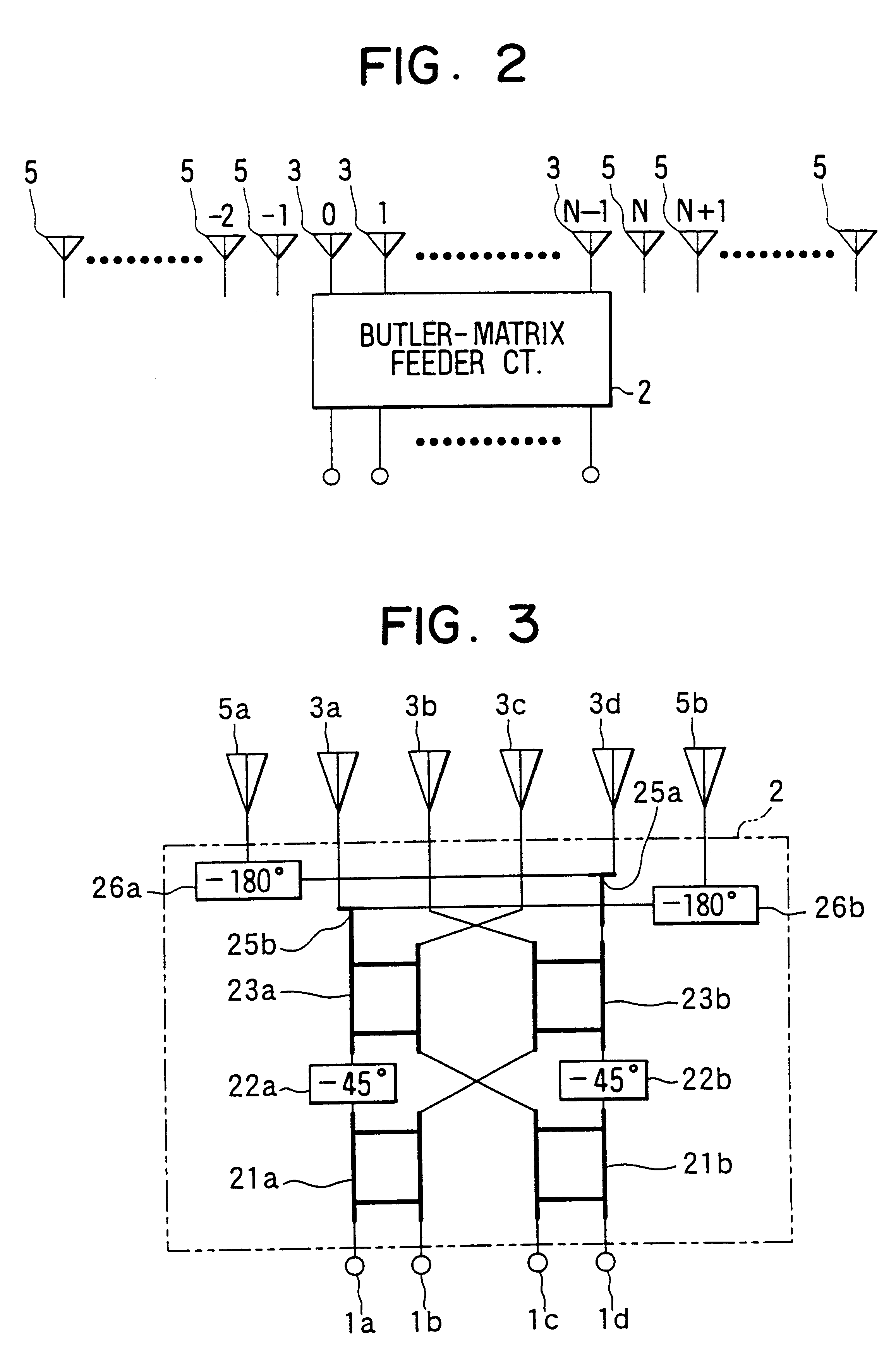Multibeam antenna having auxiliary antenna elements
a technology of antenna elements and antennas, applied in the direction of antennas, antenna details, antenna adaptation in movable bodies, etc., can solve the problems of difficult arbitrarily increasing the antenna gain, unavoidable formation of large sidelobes, etc., and achieve the effect of improving the directivity of beams and improving the antenna gain
- Summary
- Abstract
- Description
- Claims
- Application Information
AI Technical Summary
Benefits of technology
Problems solved by technology
Method used
Image
Examples
first embodiment
The radiation pattern of the multibeam antenna shown in FIG. 3 is plotted in the graph of FIG. 4, in which relative power in dB is plotted on the ordinate versus the beam angle on the abscissa. This graph is obtained by simulation under the conditions that all the antenna elements including the auxiliary antenna elements are placed with an equal interval of 0.5 wavelength and that the antenna power is distributed to each antenna element with ratios 0.1, 0.9, 1.0, 1.0, 0.9, and 0.1 (from the left to the right in FIG. 3). The radiation pattern of the conventional multibeam antenna shown in FIG. 21 reveals that there are sidelobes of -8 dB level. In contrast, it is seen in FIG. 4 that the sidelobe level of the first embodiment is reduced to a level of -15 dB. This means that the sidelobe level can be reduced by placing auxiliary antenna elements at both sides of the main antenna elements and by distributing low power to auxiliary antenna elements.
FIG. 5 shows the radiation pattern of t...
second embodiment
the present invention will be described in reference to FIGS. 10, 11 and 12. When the phase difference between antenna elements becomes large, the antenna gain decreases. To cope with this problem, power is fed to the auxiliary antenna elements 5a, 5b from the input port side of the feeder circuit 2 as shown in FIG. 10. Power dividers 29a and 29b are disposed at the input ports 1b and 1c, respectively, and the power, the phase of which is adjusted by constant-phase shifters 30a, 30b, is distributed to the auxiliary antenna elements 5a, 5b. When the power is input from the input ports 1b or 1c and the phase difference becomes large, an antenna array is constituted by five antenna elements. When power is input from the input ports 1a or 1d, an antenna array is constituted by four antenna elements. Thus, the antenna gain deviation according to the input ports from which the power is input is suppressed. The phase differences .alpha..degree. and .beta..degree. of the power distributed t...
third embodiment
the present invention will be described in reference to FIG. 13. Since the Butler-matrix feeder circuit is structured based on the fast Fourier transform (FFT) theory in digital signal processing, similar beams as in the Butler-matrix antenna can be formed by performing Fourier transform under the digital beam forming (DBF). The third embodiment shown in FIG. 13 is structured based on this concept. Frequency converters 40a-40d are connected to the output port side of the feeder circuit 2, and the outputs from the frequency converters 40a-40d are converted into digital signals by A / D converters 41a-41d connected to the frequency converters. Then, Fourier transform is performed on the digital signals by a fast Fourier transformer 42. In this manner, the same multiple beams as those in the first embodiment can be formed.
An antenna system as a fourth embodiment of the present invention is shown in FIG. 14. Three Butler-matrix antennas 50, each of which is the same as that of the first e...
PUM
 Login to View More
Login to View More Abstract
Description
Claims
Application Information
 Login to View More
Login to View More - R&D
- Intellectual Property
- Life Sciences
- Materials
- Tech Scout
- Unparalleled Data Quality
- Higher Quality Content
- 60% Fewer Hallucinations
Browse by: Latest US Patents, China's latest patents, Technical Efficacy Thesaurus, Application Domain, Technology Topic, Popular Technical Reports.
© 2025 PatSnap. All rights reserved.Legal|Privacy policy|Modern Slavery Act Transparency Statement|Sitemap|About US| Contact US: help@patsnap.com



